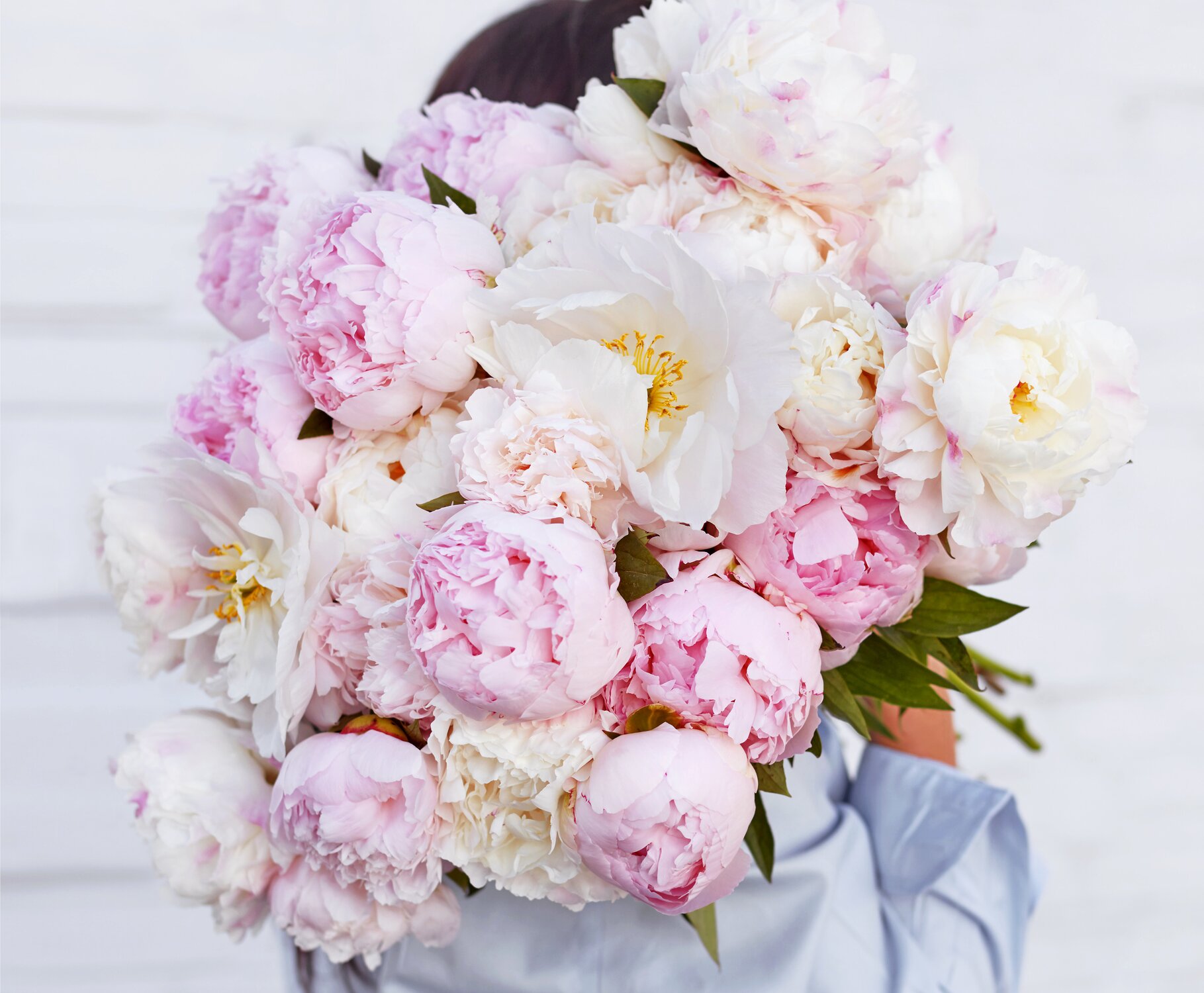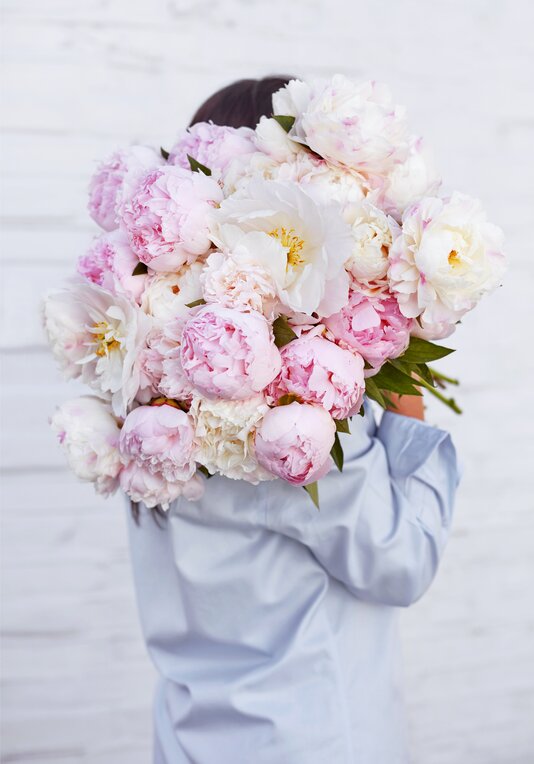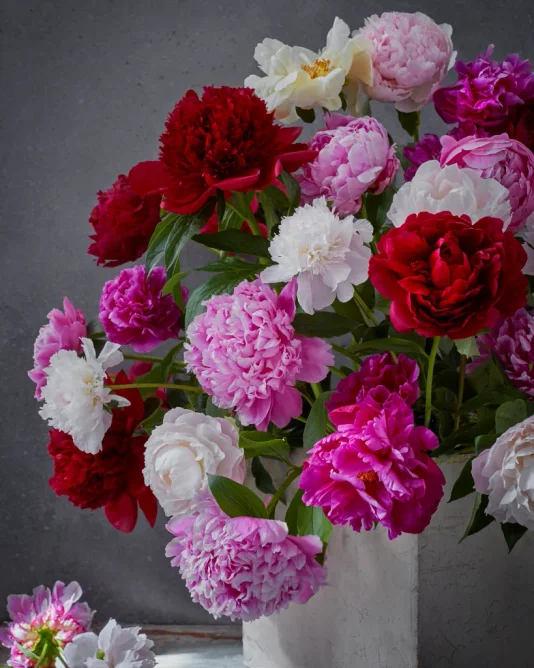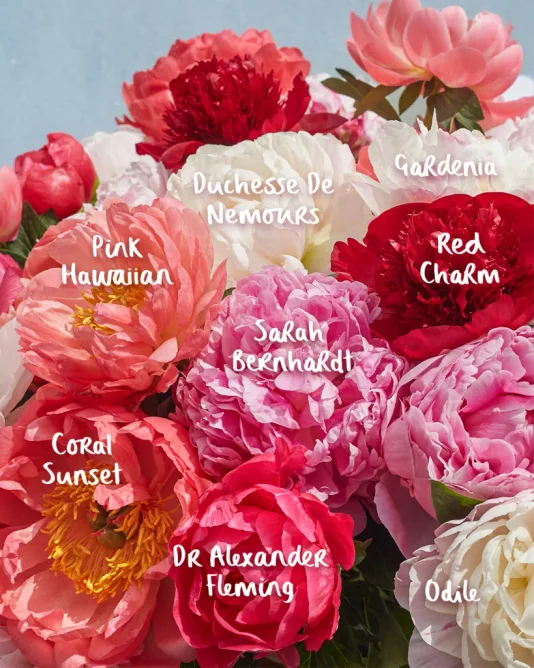
Peonies: Everything You Need To Know
Evoking memories of candy-floss, Disney princess ballgowns and flamingo feathers, peonies truly are a spoiled show-off of a flower, and that’s exactly why we love them. They arrive small but soon explode into frills and frills, filling whatever room they’re placed in with colour.
Looking at them, it’s no surprise the peony is one of the world’s most popular and well-loved flowers but we adore it for so much more than its looks. There are twelve different types, all of which you might find in your flower subscription boxes, and each with a flamboyant name (some even named after the world’s biggest superstars from acting to science). They also have a rich and varied history, and symbolise everything from romance to wealth.
Becoming a friend to Peonies, and getting to know the tips and tricks that truly please them, makes them even more show-stopping. So, without further ado, here’s our guide to Peonies…

What’s the history behind peonies?
Imagine being transformed into a flower! And not just any flower, a peony! (though we do think all flowers are beautiful… and we don’t like to play favourites.) In Greek mythology this is how Paean, a physician, was punished after he angered his God, Zeus. Some punishment! This was how the Peony got its name but historically, the flower is most associated with the Far East.
The genus Paeonia (the only genus in the family Paeoniaceae) is native to Asia, Europe and North America, with around thirty or forty varieties worldwide. In China, peonies have been cultivated since at least the sixth century, initially for medicine and then as ornamental flowers. Considering the Chinese name for peony is sho yu, which translates as ‘most beautiful’ they obviously knew from the get-go that they couldn’t be wasted in just tinctures. And when Marco Polo first came across them he described them as ‘roses as big as cabbages’ which really isn’t a bad description (although we prefer ‘most beautiful’… has a bit more grace to it.)
They were cultivated and cross-bred by the Japanese in the nineteenth and twentieth centuries, breeding herbaceous and tree peonies called ‘Itoh’ or ‘intersectional’ peonies. As for the varieties we know and love today? That’s down to the great horticulturist Victor Lemoine, who began, in 19th Century France, to create the glorious ancestors of the peonies we put out in our boxes today.

What do peonies symbolise?
An arrangement of peonies would make a beautiful gift for a newly married couple, as they’ve long been regarded as an omen of good fortune, romance and a happy marriage as each flower represents both wealth and honour. Unsurprisingly they’re also one of the most popular wedding bouquet flowers, they are also the flower used to celebrate 12 years of marriage.
How our peonies grow…
One of the things that makes peonies so special is how short the season is. It’s only from the end of May until the end of June, as they say, the most beautiful things are fleeting.
Our peonies come to us from Gordon Flint and his daughter, Laura – UK growers in Lincolnshire who plant them for us in October and who we’ve been working with for years.

What are the twelve types of peony?
Sarah Bernhardt: Probably the most recognisable of the peonies. This is the full-petalled pink peony with large flowers that bloom a little later in the season. Named after the famous, iconic French actress, they were first bred in 1906 by French breeder Monsieur Lemoine.
Alertie: With soft pink double flowers and a darker centre on a shorter stem, they’re slightly more understated but just as pretty.
Gardenia: Fragrant and often white, with a faint pink blush, these are reminiscent of a wedding dress…
Dr Alexander Fleming: A deep rose, almost hot-pink, they were named after the Scottish inventor of aspirin.
Coral Sunset: The colour is sensational and exactly like its name. Opens much wider than a Sarah Bernhardt peony, and evokes memories of the sun setting on exotic, and exciting holidays
Coral Charm: Incredibly similar to the coral sunset but with a slightly more subdued orange pink colour.
Pink Hawaiian: A darker pinkier coral colour, that reminds us of a sugary, tall drink on holiday.
Jules Elie: A darker pink than the Sarah Bernardt and deeply fragrant.
Odile: A beautifully soft coloured peony, Odile means in French ‘to prosper in battle’.
Miss America: A white peony with a yellow centre, as pretty as its namesake
Duchesse De Nemours: White and mega fluffy, this flower is OTT and we adore it.
Red Charm: As red as a rose, with a soft fluffy centre.
How to care for peonies
Luckily, peonies are one of the easiest flowers to look after.
In terms of arranging your peonies, you don’t have to do much really as they’re perfectly fine on their own. If you do want to pair them with other flowers, they work wonderfully with pastel-coloured flowers, agapanthus, alliums, stocks, and alstroemeria.
When your peonies arrive they may look a little small, but they end up almost as big as your face, exploding with colour and scent.However, if you think they are a little too closed, pop their heads in a bowl of warm water and smack them on the table. That’ll speed up the opening process. Don’t whack them too hard though! Gently does it…
Peony season is short and fast – the brightest stars burn the fastest. So rather than our flowers usually lasting two weeks – Peonies have a slightly shorter life of just over a week.
As with all of our flower arrangements make sure you change the water and snip their stems regularly.
Up next...
From fresh bud to long-lasting bloom
Our flowers are the freshest around, arriving in bud and opening to their full beauty at your home. Find out how you can make the most of your arrangement to enjoy it for up to two weeks or longer.
Celebrating our venture into the world of floral art
Celebrating Saatchi Gallery's exhibition Flowers - Flora in Contemporary Art & Culture, we're excited to present our very own large-scale floral art installation.
